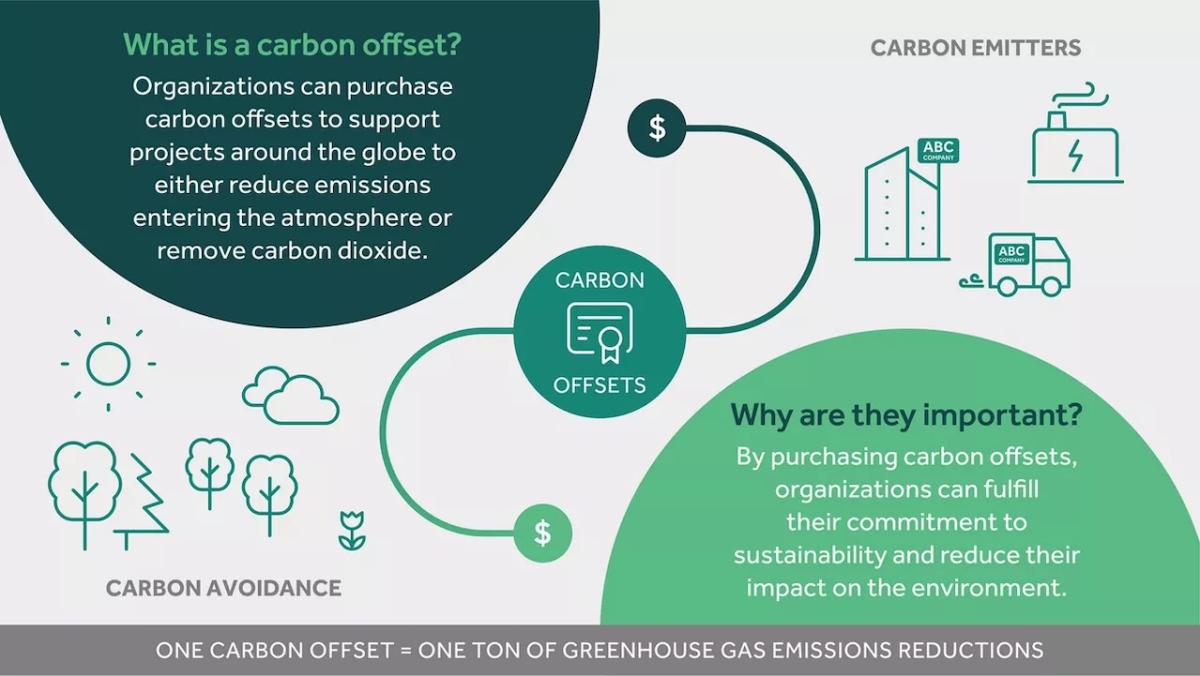Understanding Carbon Offsets
Published 05-11-23
Submitted by NRG Energy

Originally published on NRG Energy Insights
Climate change has become increasingly front of mind, with many organizations looking for ways to reduce their carbon footprint and limit their impact on the environment. One "tool in the toolkit" is the purchase and use of carbon offsets, allowing organizations to offset their greenhouse gas emissions by supporting a variety of sustainable projects.
What are voluntary carbon offsets?
Voluntary carbon offsets are an instrument organizations can purchase to support projects around the globe to either reduce emissions entering the atmosphere or remove carbon dioxide (CO2). These offsets are generated from a wide variety of sustainable projects, such as wind and solar farms, reforestation initiatives and other nature-based solutions, energy efficiency measures, as well as harmful industrial process reduction technologies. The goal of these projects is to reduce the amount of CO2 and other greenhouse gases that are released into the atmosphere, either through avoiding emissions or through direct removal of CO2. Voluntary carbon offsets are called “voluntary” because they are not required by law but are instead purchased by organizations to demonstrate their commitment to sustainability and reduce their impact on the environment.
Types of voluntary carbon offsets
There are several types of voluntary carbon offsets available, each with its own specific focus and benefits. Some of the most common types of carbon offsets and related sustainable projects are:
- Renewable Energy Offsets include wind and solar farms, hydroelectric dams, biomass energy and landfill gas to power facilities. The purchase of carbon offsets from these facilities can ensure that the projects receive the financing needed for construction and operation.
- Nature-Based Solutions (NBS) support activities like planting trees in degraded areas (reforestation and afforestation), paying stakeholders to not cut down trees (avoided deforestation), improved forest management (sustainable forestry practices), agricultural soil carbon sequestration, and wetlands restoration.
- Energy efficiency technologies include upgrading energy-efficient lighting and or HVAC systems, improving building insulation, and replacing outdated and inefficient appliances.
- Industrial processes typically refer to the capture and destruction of methane and other ozone depleting substances (ODS). Various industrial sectors use ODS in refrigeration, air conditioning, and the production of insulating foam and cushioning.

Why is carbon offsetting important?
Large, sophisticated businesses and organizations are among the largest emitters of carbon dioxide and other greenhouse gases. By reducing their carbon emissions, they can better meet sustainability goals while also improving their brand reputation and appeal to customers, employees, and other stakeholders who are concerned about the environment. Demonstrating a commitment to sustainability and reducing their carbon footprint, organizations can distinguish themselves from their competitors.
With several different types of carbon offsets available, organizations can choose the type that best fits their needs and goals and demonstrate their commitment to sustainability in a meaningful and impactful way. Stay tuned, next I’ll explore how carbon offset projects are evaluated to ensure they are a true solution in the fight against climate change.

NRG Energy
NRG Energy
At NRG, we’re bringing the power of energy to people and organizations by putting customers at the center of everything we do. We generate electricity and provide energy solutions and natural gas to millions of customers through our diverse portfolio of retail brands. A Fortune 500 company, operating in the United States and Canada, NRG delivers innovative solutions while advocating for competitive energy markets and customer choice, working towards a sustainable energy future.
More from NRG Energy

